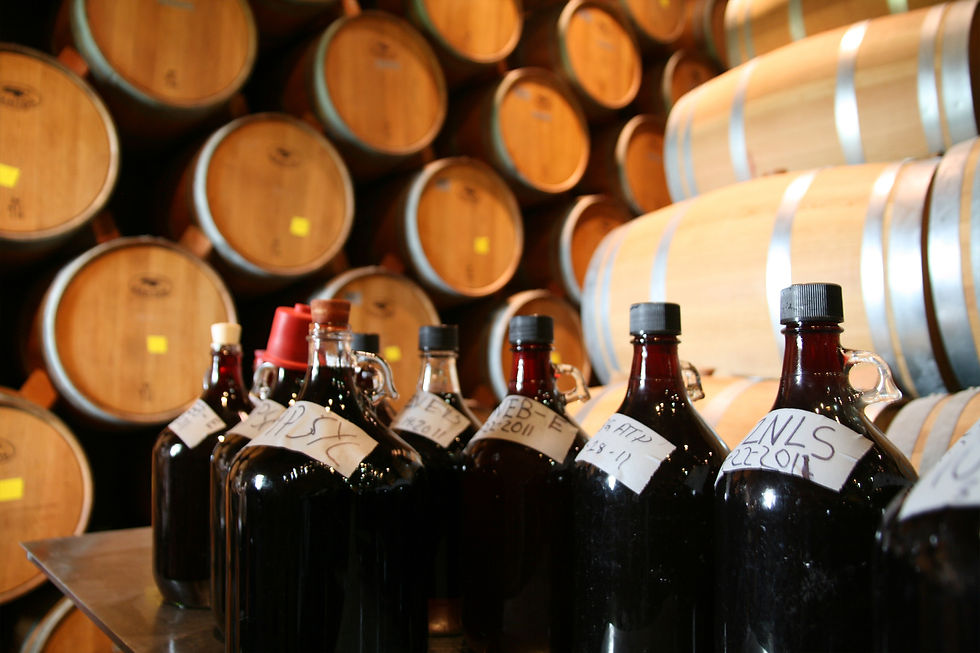Ripeness Part Two: Lower Alcohol Wines
- Blue House Wines

- Dec 1, 2020
- 3 min read
Updated: Jun 30, 2021
Part One took us through the evolution from simple peasant wines of yesteryear to the big flavor wines of the 1990’s.

These impressive “made” wines were all the rage in the United States, with high scores, high prices and good quality. So everyone is happy, right? Well, not everybody. What about the pleasant, easy drinking wines that have been made in Europe for centuries? What about lesser known grapes outside of the 20 most popular varieties? This view has been championed by Sommeliers, who argue overly concentrated and alcoholic wines do not pair well with food – in fact they overpower subtle flavors found in fine dining (Steakhouses are the exception).
This reaction started gaining traction in 2005. Many a Sommelier touted that they wouldn’t serve wine with over 14% alcohol in their restaurant. That these big flavor wines take away from the pleasure of drinking. They do have a point. There are definitely health benefits to consuming less alcohol. The movement even created its own club in 2011 named In Pursuit of Balance, for the promotion of subtlety superior wines with less alcohol than their peers.
Alcohol levels started coming down, and today, it is not uncommon to see white wines with less than 12.5% alcohol and reds under 13.5%. (Lower Alcohol are a completely different category to “Low Alcohol” wines, which have had the alcohol removed). Many wineries were eager to abandon the world of big-flavor, high scoring wines in favor of trying something more site-specific. But does a lower alcohol wine mean it is a better wine?
Winemakers try to fit their wines into this lower alcohol mold, but it does not always work. There are two main ways to make a lower alcohol wine: One is to pick grapes earlier, but this will sacrifice ripeness, resulting in a wine that can be very austere. The other way is to simply add water. Watering down a wine can bring the alcohol down a percent or two, but it changes the wine’s texture. Where once the market was once flooded with big overripe wines, today they might be equaled by thin mean-spirited wines.
This lower alcohol trend seems to be most noticeable for mid-priced wines. More expensive or collector bottles rarely have someone not buy them because of alcohol over 14%. These trending lower alcohol wines can be confusing to the consumer who wants both to understand and also enjoy the wine in their glass.
The good news is that these lower alcohol wines are often made with non-intervention approach, which everyone can agree will make a more site-specific and unique wine. There are now festivals and large tastings dedicated to this, with trendy, urban sommeliers touting wines made in a hands-off approach. The younger crowd is eager to try anything natural and organic, so it appears the pendulum has been swinging toward grower wines, instead of the ‘made’ wines of the 1990’s.
Climate Change is an issue, and one that favors high alcohol, as the growing season is becoming hotter in almost all regions across the world. This means that lower alcohol wines will only become more difficult to make. Viticulture will have to move farther from the equator or to higher elevation sites.
In the end, wine should achieve natural balance for the site, without having to fit either a high or low alcohol mold. A Napa Valley Cabernet with 12% alcohol would taste like a bell pepper, or an Australian Barossa Shiraz with 12% alcohol would taste only of black pepper. Likewise, Champagne with 14% alcohol would have no acid and taste like an over-ripe pineapple. It is best for the Cabernet and Shiraz to stay at 14%+ alcohol, while the Champagne needs to hover around 12%.
One final note - I notice that most French still wines contain 13.5% alcohol. The alcohol is high enough that they are more rounded and less angular, but low enough that you don’t taste the alcohol. Maybe they are onto something…



Comments